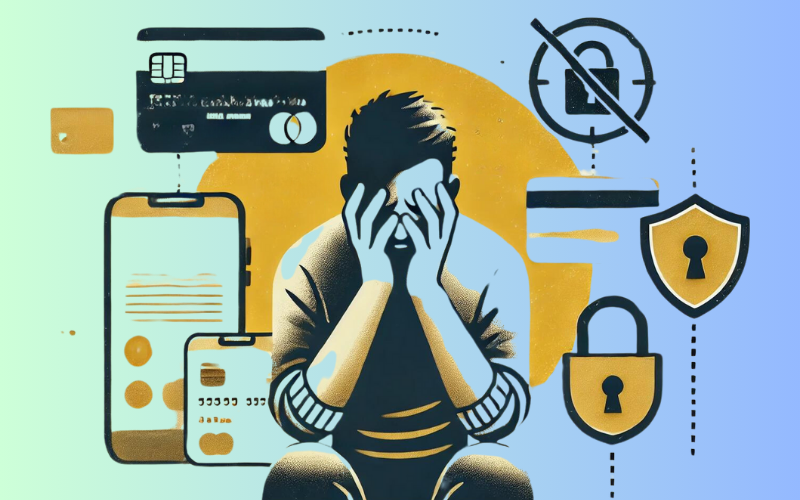


Identity theft is an increasingly common problem in today’s digital world. Cybercriminals are constantly finding new ways to steal personal information and use it for financial gain or fraudulent activities. Knowing how to spot the signs of identity theft early can save you time, money, and the frustration of trying to recover your identity. In this guide, we’ll walk you through the top warning signs of identity theft and the steps you should take immediately to mitigate the damage.
Identity theft occurs when someone uses your personal information—like your name, Social Security number, or credit card details—without your permission. Thieves often use this stolen data to commit fraud, including opening credit accounts in your name, making unauthorized purchases, or even using your identity for crimes.
Understanding how identity theft works and recognizing early signs can help protect your financial stability and personal reputation. Let’s explore the warning signs of identity theft and what to do if you suspect your information has been compromised.
Catching identity theft early is key to minimizing the damage. Here are the most common warning signs to look out for:
One of the clearest indicators of identity theft is seeing unfamiliar transactions on your bank or credit card statements. These unauthorized charges can range from small amounts—often a test by the thief to see if you’ll notice—to larger purchases. It’s essential to monitor your accounts regularly and question any unknown activity.
If you receive a bill or collection notice for an account you never opened, this is a major red flag that someone has used your identity to open fraudulent accounts. These accounts can quickly harm your credit score if they go unpaid.
A sudden drop in your credit score for no apparent reason could signal identity theft. Thieves may have opened credit accounts, taken out loans, or incurred debts in your name. Monitoring your credit score regularly can help you catch this early.
If you notice a sudden stop in your bills or financial mail, it may be because a thief has changed your mailing address. Identity thieves often reroute mail to keep you from receiving statements or bills that could alert you to the fraud.
If you use identity theft monitoring services, you may receive alerts about suspicious activities related to your personal information. These services monitor your credit, Social Security number, and other data for signs of misuse.
If you suspect your identity has been stolen, acting quickly can help prevent further damage. Here’s what you should do:
The first step is to contact one of the major credit bureaus—Equifax, Experian, or TransUnion—to place a fraud alert on your credit report. This makes it harder for identity thieves to open new accounts in your name because creditors are required to verify your identity first.
Request a copy of your credit report from all three major credit bureaus and thoroughly review it for any unfamiliar accounts or inquiries. If you find any fraudulent activity, report it immediately.
A credit freeze prevents new creditors from accessing your credit report, making it nearly impossible for identity thieves to open accounts in your name. You’ll need to contact each credit bureau to initiate a freeze.
Contact your bank, credit card companies, and other financial institutions to report the fraudulent activity. They can help you close compromised accounts and prevent further unauthorized access.
File a report with the Federal Trade Commission (FTC) by visiting identitytheft.gov. The FTC will guide you through the recovery process and help you create a personalized action plan.
While it’s impossible to guarantee complete protection against identity theft, there are steps you can take to reduce the risk:
Make it a habit to check your bank and credit card statements frequently. Catching suspicious activity early can stop identity theft in its tracks.
Ensure all of your online accounts, especially those related to your finances, are protected by strong, unique passwords. Consider using a password manager to help generate and store secure passwords.
Adding an extra layer of security through two-factor authentication (2FA) makes it more difficult for criminals to access your accounts, even if they have your password.
Review your credit report at least once a year to ensure no unauthorized accounts or inquiries have been made. You’re entitled to a free annual report from each of the major credit bureaus.
Identity theft is a serious issue that can cause long-term financial damage if not caught early. Recognizing the signs—such as unfamiliar transactions, unexpected bills, or changes in your credit score—can help you act quickly to minimize the impact. By following the steps outlined in this guide, you can take control of your financial security and prevent further damage.
Remember, staying vigilant and proactive about protecting your personal information is key. Monitor your accounts, strengthen your online security, and take advantage of identity theft monitoring services to reduce your risk.
Copyright © 2025 ・ SafeIDWatch ・ All Rights Reserved